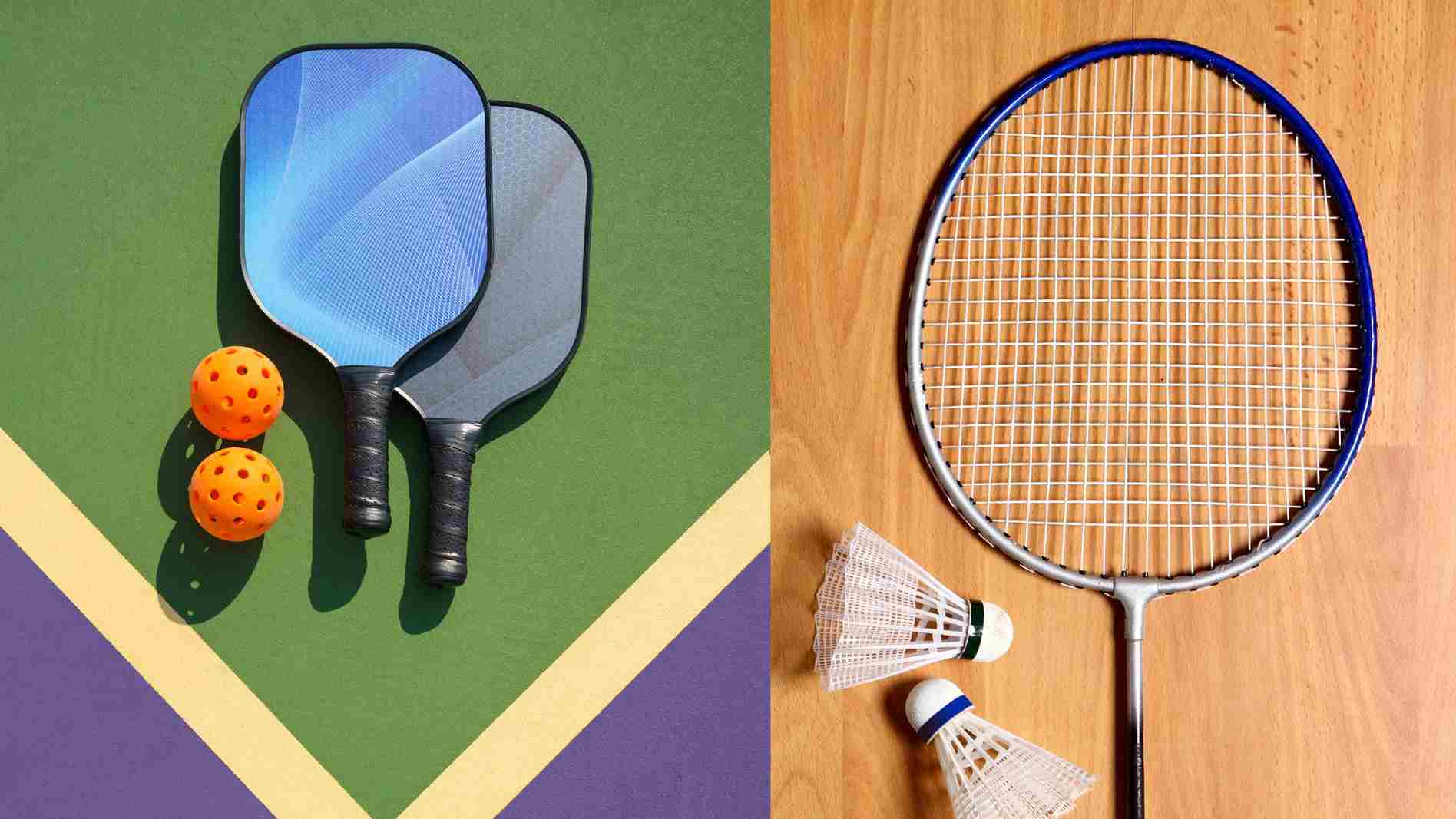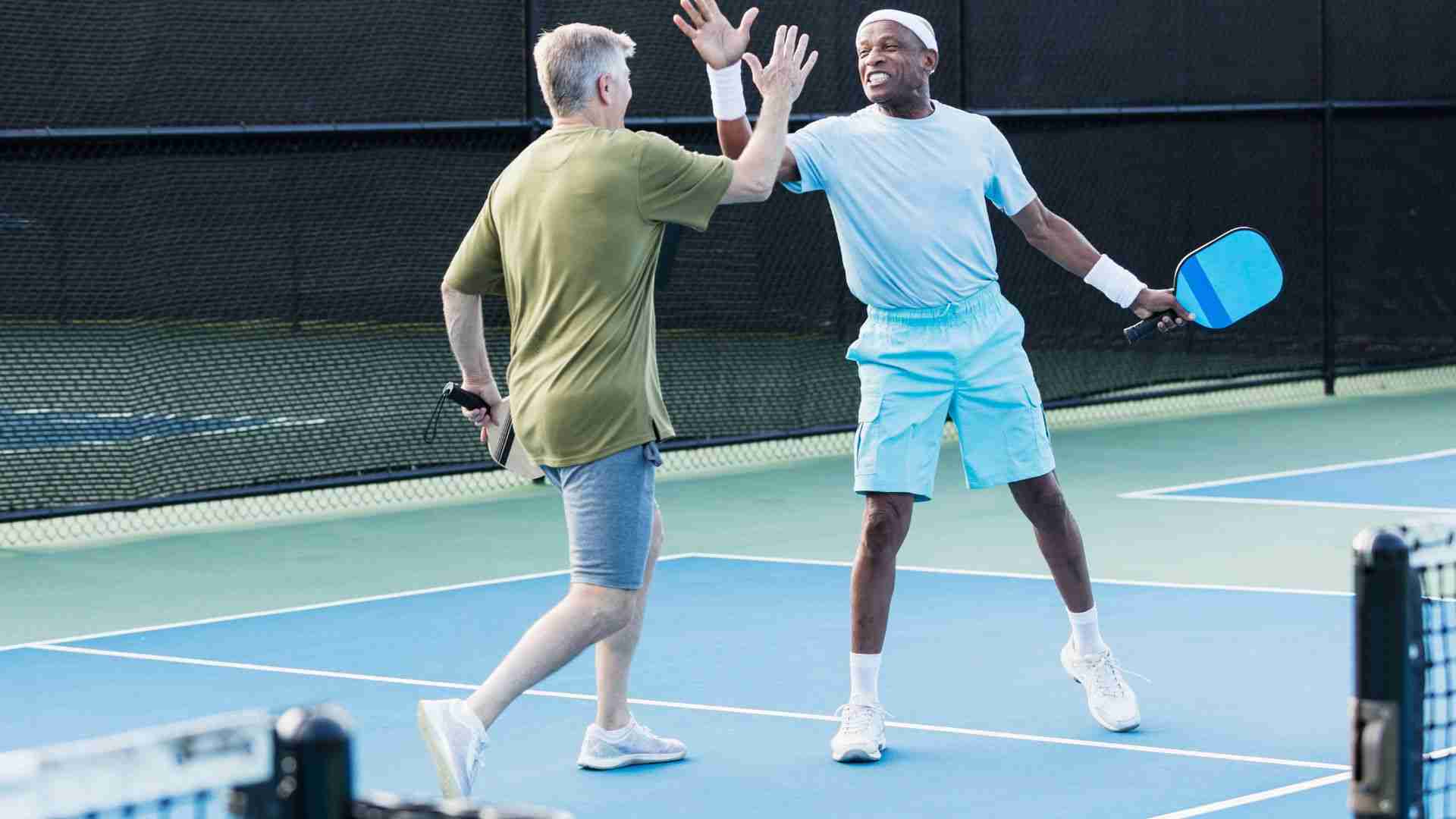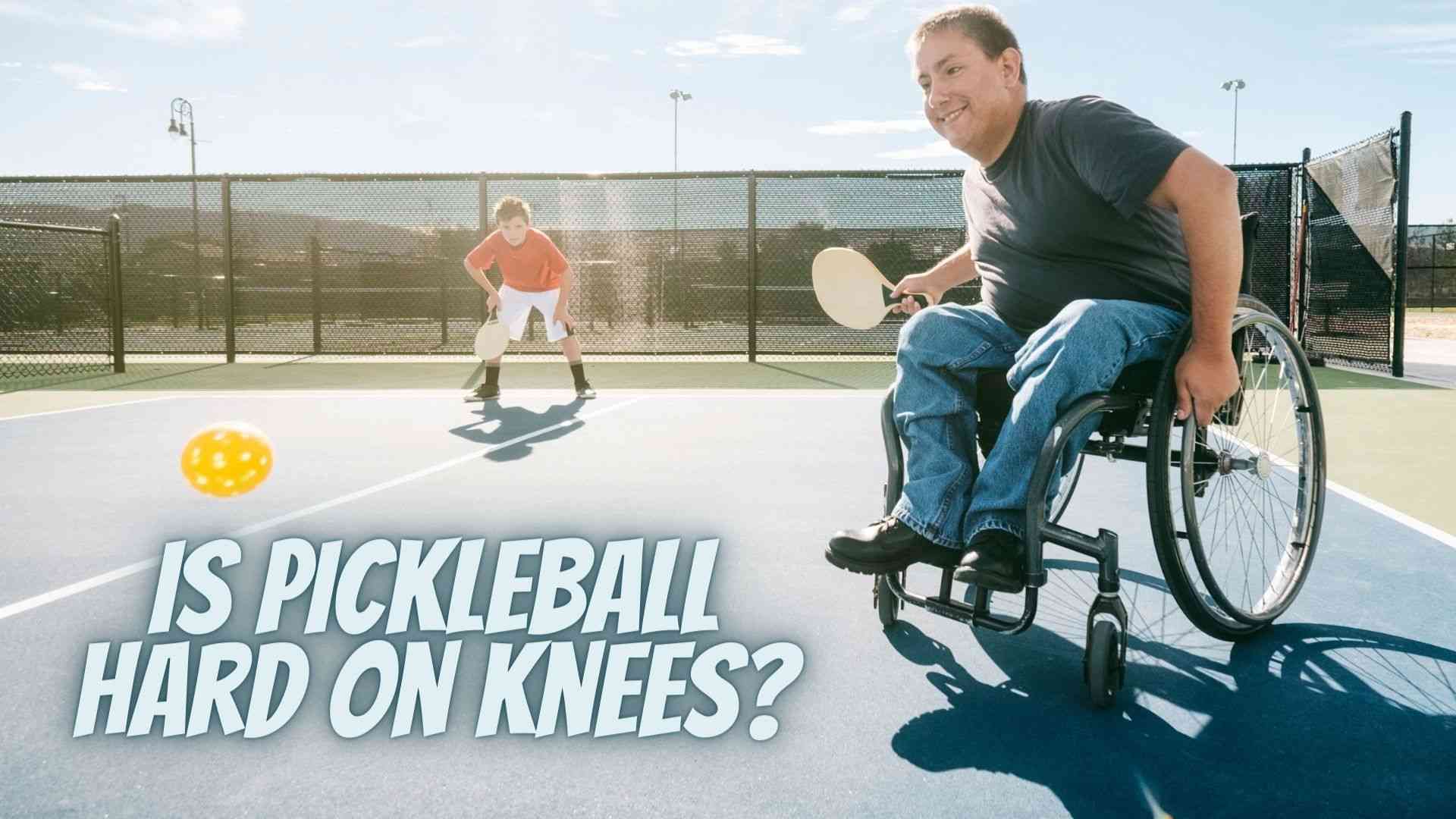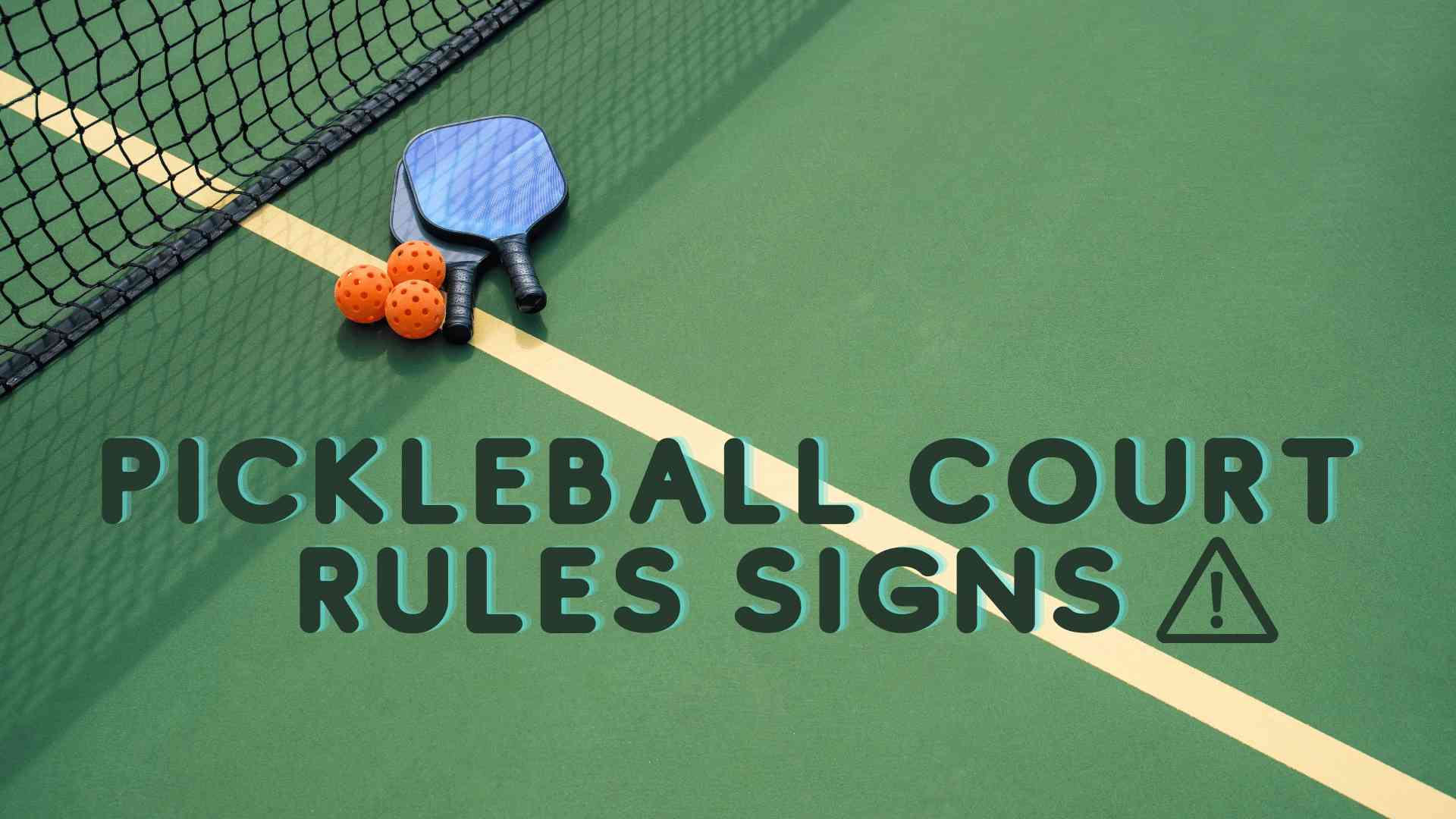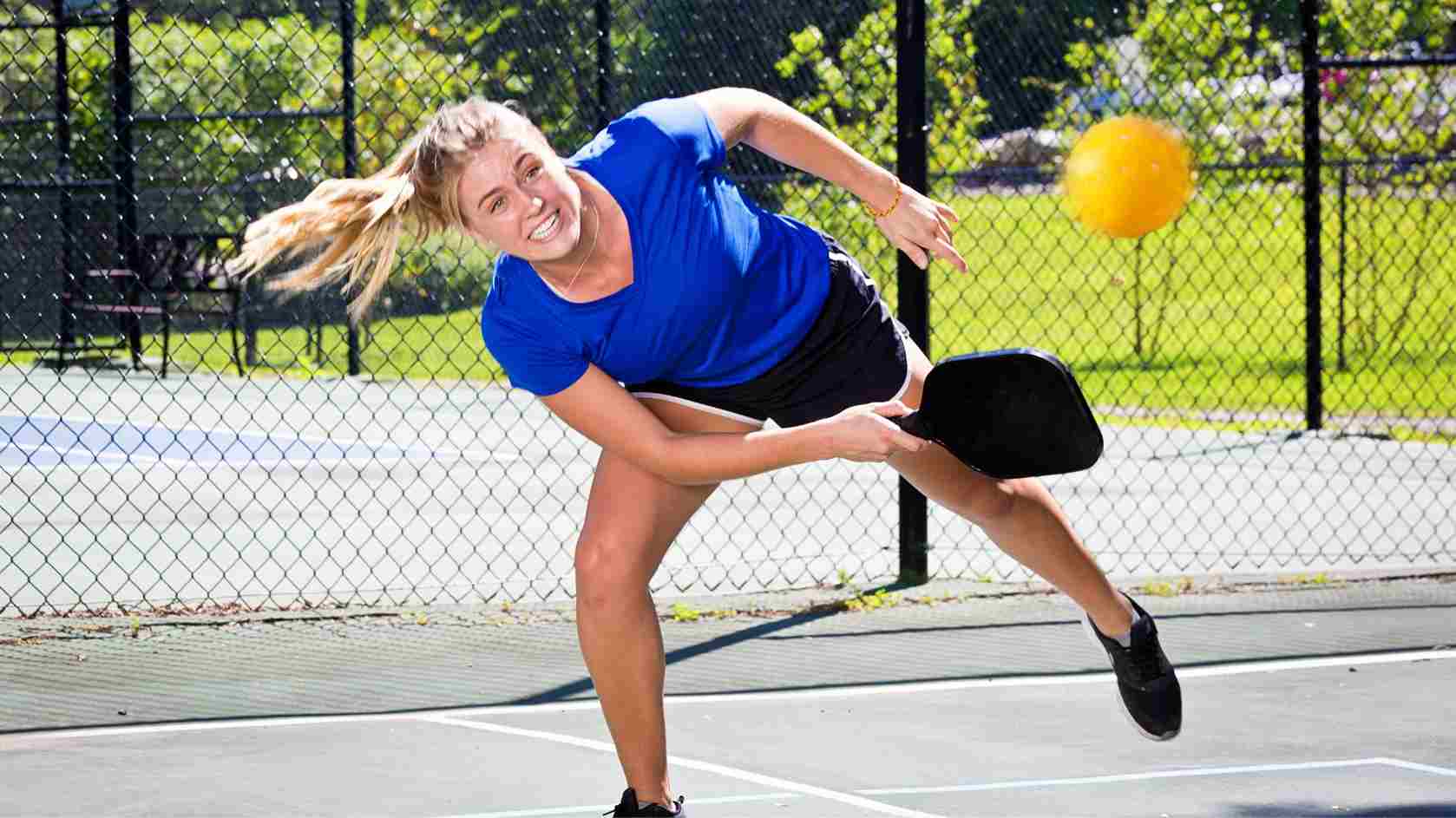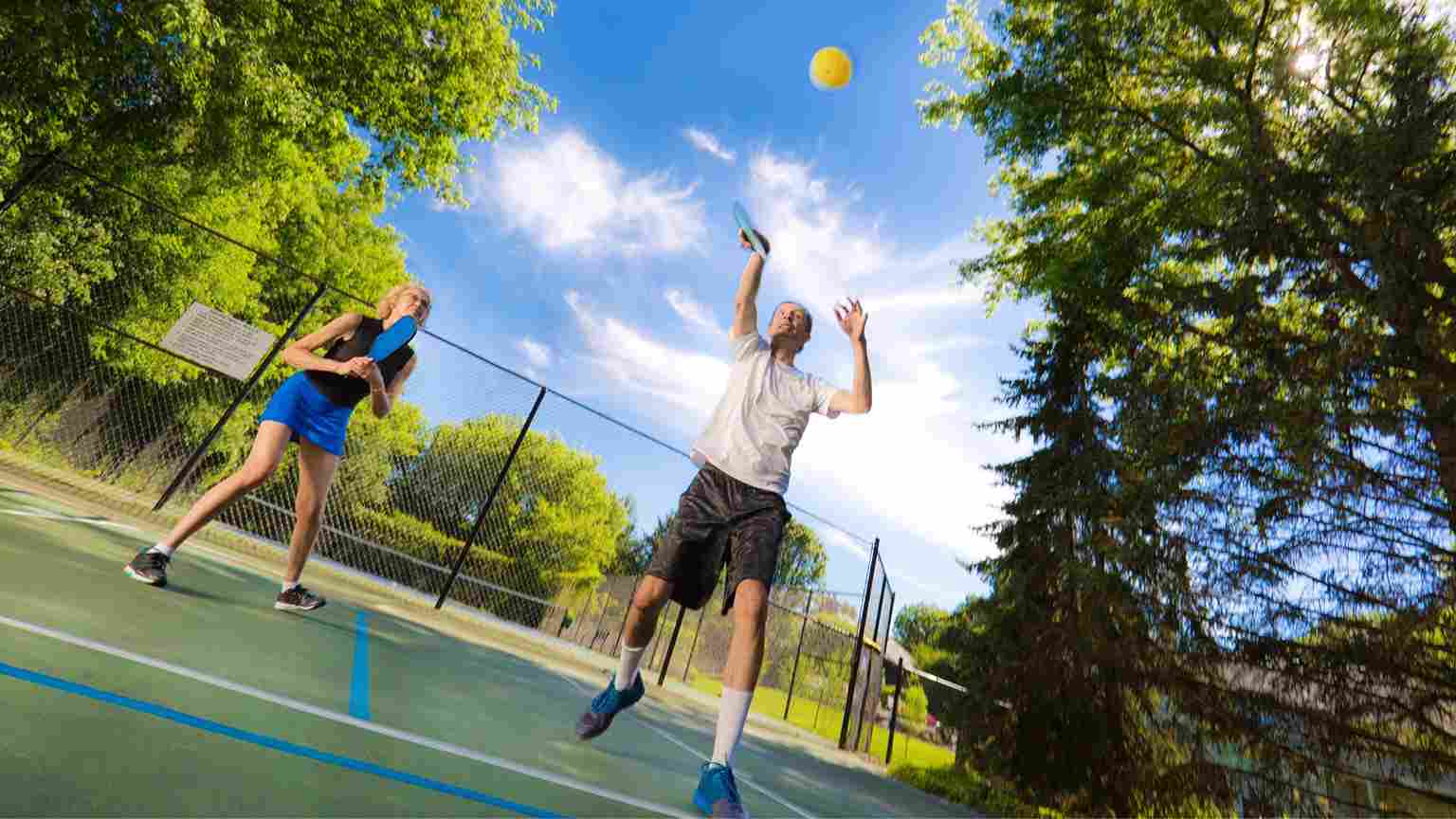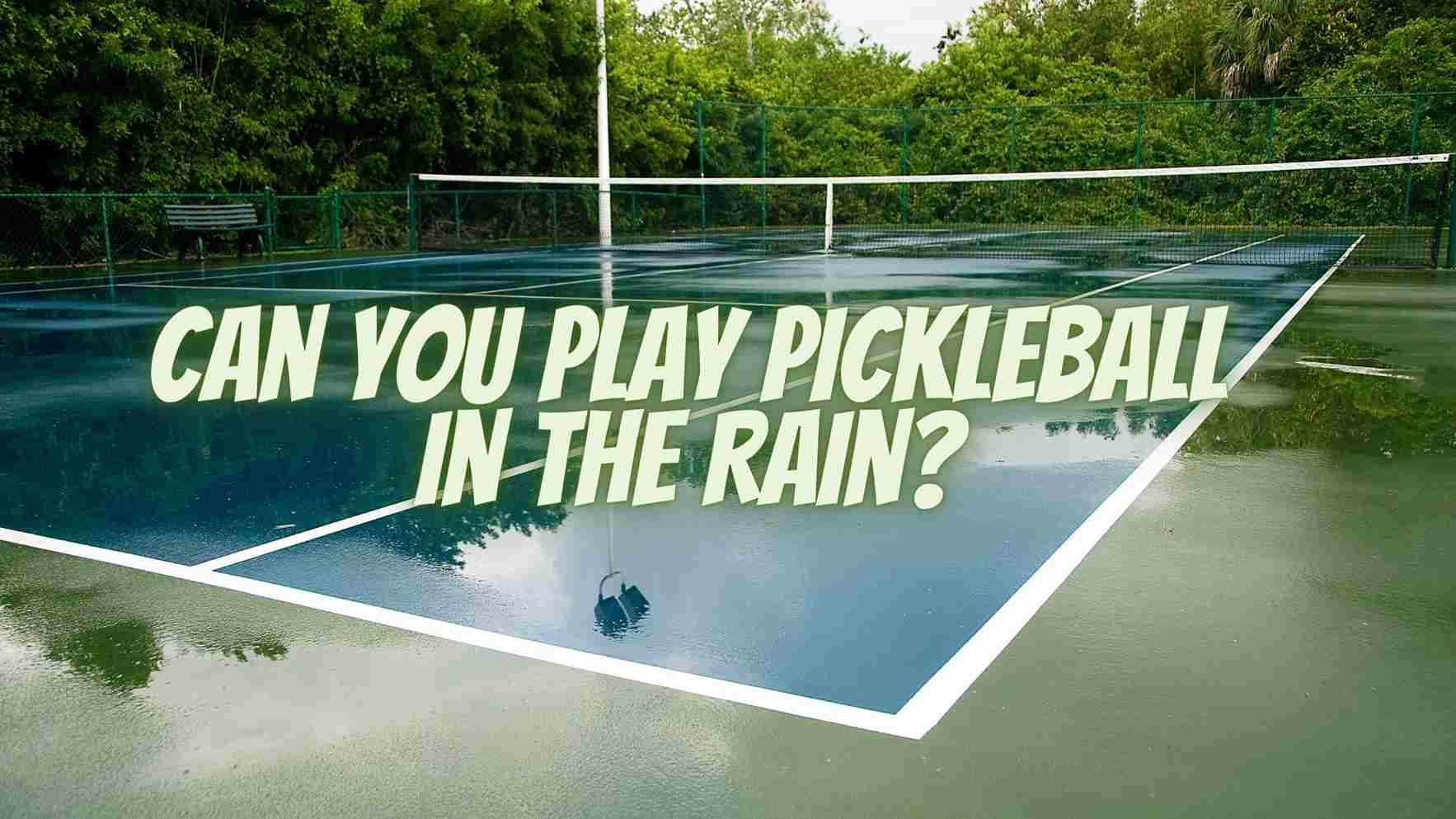Looking to improve your pickleball doubles skills? Here are the essential rules of pickleball doubles and strategies
you need to know to dominate on the court. From understanding the non-volley zone to
perfecting your serve, you’ll learn everything you need to play like a pro. Take advantage of
these tips, and take your pickleball scoring game to the next level!
According to the rules of pickleball doubles, players must alternate hitting the ball, and the
serving team must continue to serve until they lose. In an even score (0-0, 1-1, etc.), the right-
side player serves, while in odd scores (2-1, 3-2, etc.), the left-side player serves. If the ball has
not bounced yet, players cannot enter the non-volley zone.
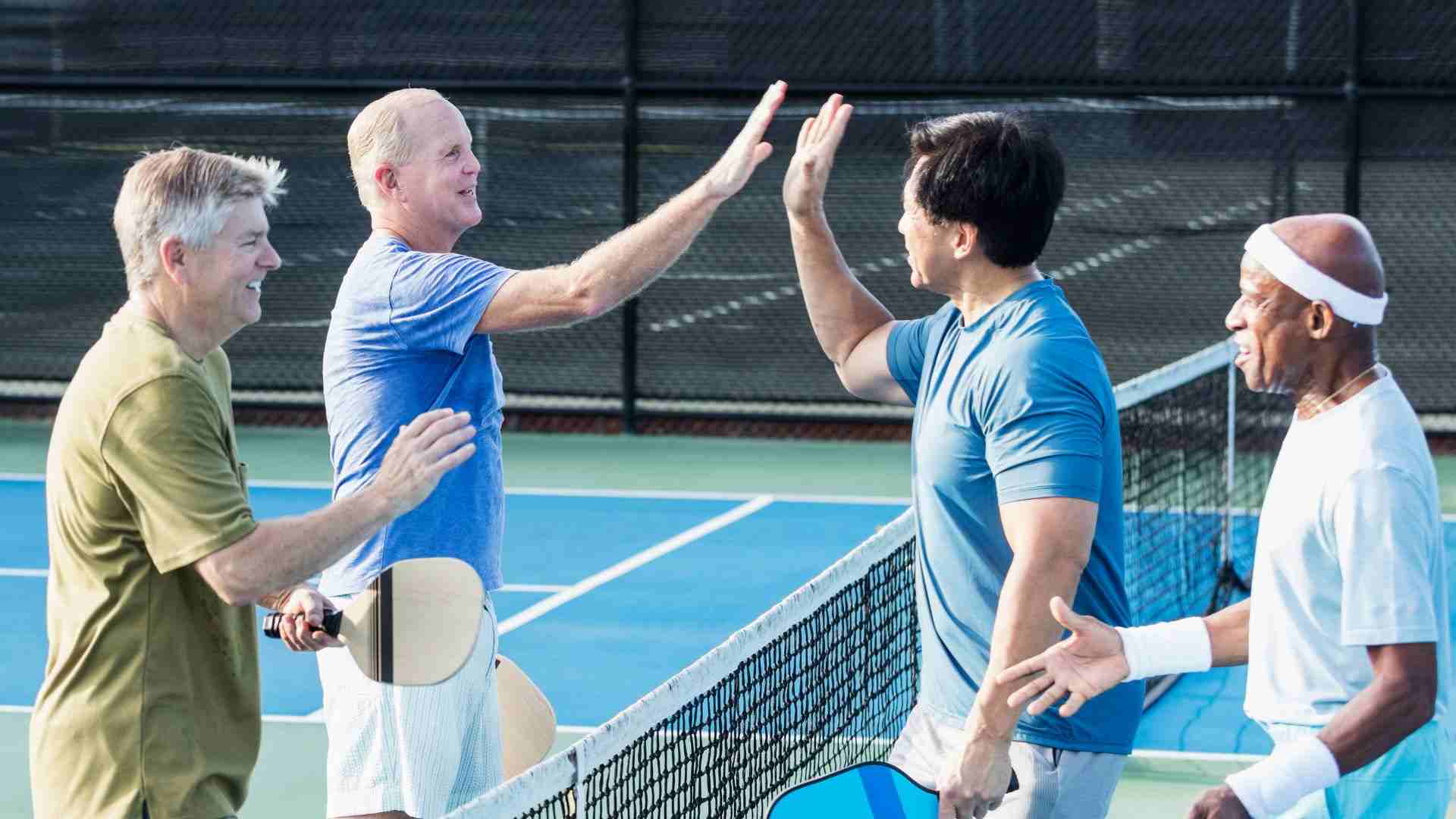
Pickleball singles are more like tennis, while pickleball doubles give you the full pickleball
experience, with much more space for players to pass the ball and make more powerful shots.
In doubles pickleball, there can be hits and strikes, drops and dink shots, as well as exciting
rallies that are dominated by the kitchen zone or non-volley zone.
You should know the rules of pickleball doubles if you are new to pickleball or even if you are an
experienced player.
Rules For Pickleball Doubles
- Who serves first in pickleball doubles? The first serve is served by the player on the right side of the court. If he manages to score the serve, the server moves to the left of the court.
- The server continues to serve from left to right when the server scores a point.
- When a server loses a point, the second player comes in, but the previous server must stay in the place where he ended the game.
- In pickleball doubles scoring “even left, odd right” rule also applies.
- When the server loses the serve in second place, it will be passed to the other team, and the player on the right will serve first. This rule is applied throughout the game.
- What is the starting score of a doubles pickleball game? The score should be called out in a sequence of three numbers, like zero, zero, two (0-0-2), then (serve score, receiver score, and doubles only).
Rules Of Pickleball Doubles Explained
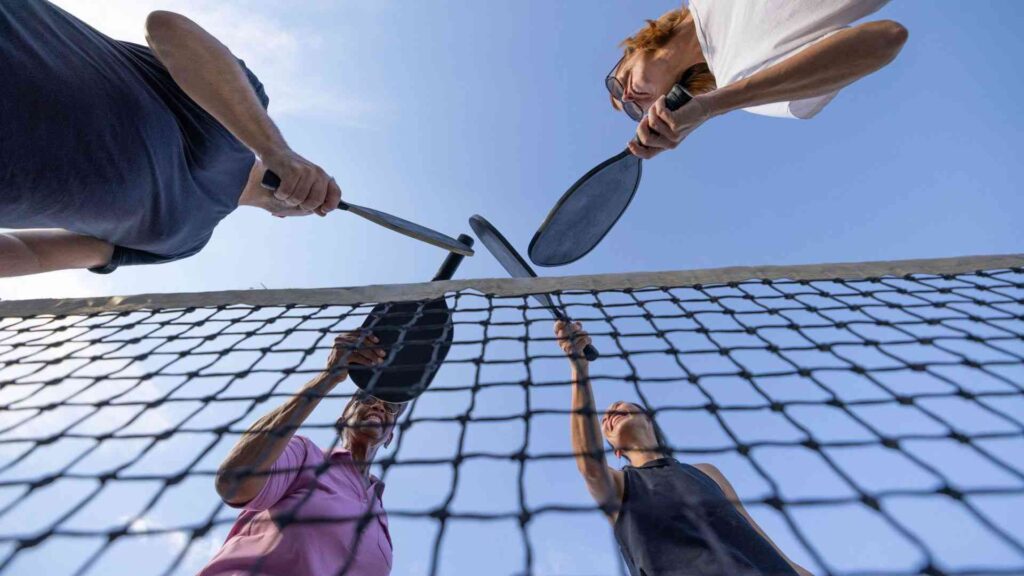
Discover the pickleball serve rules doubles with our comprehensive guide. Learn the basics of serving, volleying, and scoring. What you need to know about pickleball serving rules doubles, will be covered in the following overview.
Basics
Pickleball doubles are played with four players, two on each side of the court, and it is divided into two halves, with a net in the middle. The game starts with a serve, which must be hit diagonally across the court to the opposite team’s service box.
The ball must bounce once before it can be returned. After that, both teams can hit the ball back and forth until someone makes a mistake, and the ball goes out of bounds or hits the net, according to the pickleball rules for doubles.
Serve
As the server, you need to be behind the baseline and pass the ball diagonally across the court to the opposite team’s service box. The ball must be hit below the waist and above the knee.
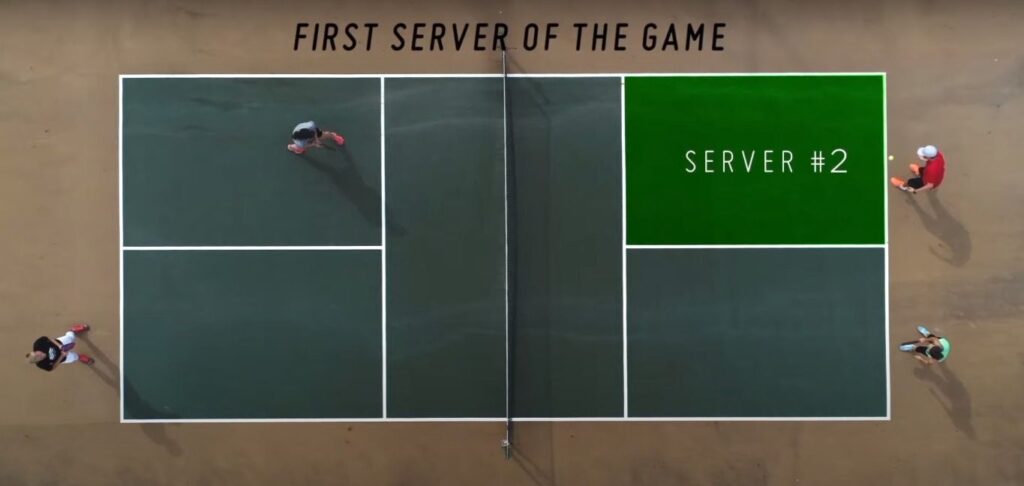
The ball, upon hitting the net and landing in the correct service box, is called a let serve and can be played again. If the serve goes out of bounds or doesn’t clear the net, it is a fault, and the other team gets the point by the rules of pickleball doubles.
At the start of the game, only one player on the first-serving team is allowed a service turn before giving up the ball to the opponents. Thereafter, both members of the team will have a service turn before the ball is turned over to the opposing team.
Only the team or player serving in pickleball can score points, while on the other hand, the receiving team cannot score points.
From the server’s side, he serves diagonally opposite his opponent, and only when a point is scored by the server he swaps his position with his teammate, while on the other hand, the receiver cannot change his position by swapping.
This continues until one of the players of the serving team commits a fault and loses a point. Now the serving opportunity goes to their opponent, and he makes points until he commits a mistake, in case of which the other team will now serve with their player from the right side of the court by the rules of pickleball doubles.
The Non-Volley Zone
According to Pickleball doubles rules, you can’t hit a volley while standing in the kitchen. You also can’t step into the kitchen and hit the ball. You have to wait until the ball bounces outside of the kitchen before you can hit it.
However, you can enter the kitchen to retrieve a ball that has bounced in the kitchen and hit it outside of the kitchen. A player may jump across the non-volley line after hitting a volley if they don’t touch any part of the non-volley zone line while hitting the ball.
Scoring Rules In Pickleball Doubles – Scoring In Pickleball
The rules of pickleball doubles, according to the USA score, can be different from singles because the numbers score is displayed in three numbers. The first is the server score, the second is the receiver score, and the third is the server number which can be only one or two.
The server number can be a little confusing for beginners because they can assume the server number to be the same throughout the game, which is not true because when a server serves from the right side of the court, then he changes his position in case a point has been made against his opponent and the other player comes to his place becoming the 1 number server, by the rules of pickleball doubles.
The score at the first of the game is called (0,0,2), which indicates the scenario in which the server is at zero points, and the service now goes to his opponent, making the third number of the score 2, which depicts the server from the second team. The serving team at the very beginning of the game is determined by the toss of a coin.
Server Position
There is also a simple rule associated with the pickleball doubles serving rules. The first server when serving in pickleball doubles should be on the right side of the court when the score is even and on the left side of his court when the score of his team is odd.
Double Bounce Rule
Both teams will let the ball bounce on their respective sides of the court at their service turns before hitting the ball with the paddle to make a shot. This is called the Double bounce rule in the rules of pickleball doubles. Multiple bounces result in the loss of a point.
There are 11, 15, or 21 points.
How to Keep Score in Pickleball Doubles? The first team to score 11 points and be ahead by two points wins the game, but if there is a team with 10 scores and the second team leads by only one point, then the game will remain to continue and be played to 15 or 21 points.
Watch Video: How to play Pickleball Doubles?
Faults In Pickleball Rules Doubles
Whenever a player violates some of the rules, then that player loses a point from his side, and the point is over at the moment the violation occurs; it is considered a fault, and some of them are mentioned below.
- Serve out of bounds
- Serve doesn’t clear the net.
- Stepping into the non-volley zone and hitting the ball
- Hitting the ball out of bounds
It’s important to follow the rules of pickleball doubles when playing doubles to ensure a fair and enjoyable game for everyone involved. By knowing the basics, you’ll be able to play with confidence and have fun on the court.








